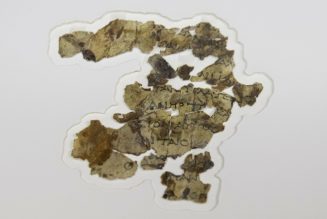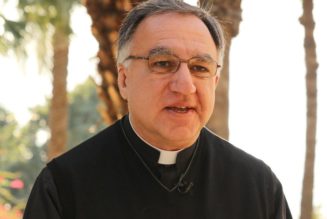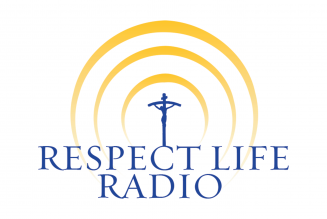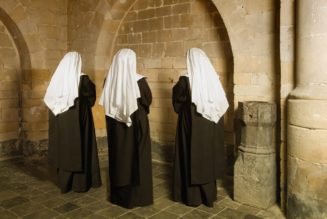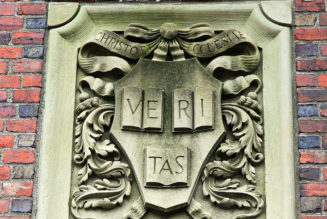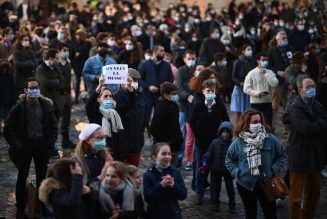|
Listen to this story: |
ROME – Liturgically and spiritually, Christmas and Easter are the holiest periods on the annual Christian calendar. From a PR point of view, the holidays also represent peak visibility for the papacy, since they’re moments when every media outlet on the planet will have their eyes trained on Rome.
This year, Pope Francis needed that platform to project strength, since he came into Holy Week after a surprise hospitalization had generated a health scare. On that front the pontiff delivered, demonstrating resilience and good form throughout his grueling schedule.


That wasn’t the only message, however. Both explicitly and in deep-in the-weeds fashion, Pope Francis also reinforced a core geopolitical and diplomatic conviction – to wit, that the Vatican on his watch is fully committed to a multilateral foreign policy.
In the abstract, it makes sense that history’s first pope from the global south should reposition the Vatican as a truly multilateral actor, away from its traditional alliance with the Western powers. That transition has been clear for some time, and Holy Week 2023 reinforced the message.

The overt symbolism of the Good Friday Via Crucis ceremony with regard to Russia and Ukraine made the point.
From the beginning, Pope Francis has attempted to maintain a balanced position on the conflict that’s substantively closer to the line of, say, China, India and Brazil than that of the United States and NATO.
To some extent, that’s just the Vatican being the Vatican, attempting to retain its traditional posture super partes, “above the parties,” and therefore able to act as a mediator. Yet there’s also a distinctively Pope Francis element in the way in which he’s clearly rejected the Western diagnosis of the conflict, condemning the flow of arms into Ukraine, refusing to repudiate Putin by name and even suggesting that Russia has legitimate security concerns.

Last year on Good Friday, the Vatican’s effort not to take sides was expressed by having two women who happen to be friends, one Ukrainian and the other Russian, carry the cross together during one of the stations at the traditional Via Crucis ceremony. The gesture generated criticism, including from Major Archbishop Sviatoslav Shevchuk, leader of Ukraine’s Greek Catholic Church, who said: “I consider such an idea untimely, ambiguous, and such that it does not take into account the context of Russia’s military aggression against Ukraine.”
Not to be deterred, the Vatican was at it again this year. Although Pope Francis was not physically present at the Via Crucis ceremony owing to the unseasonal cold in Rome, which was deemed unsuitable for a pontiff still recovering from bronchitis, his imprint nevertheless clearly was felt, as the tenth station of the Cross this year was accompanied by texts from unnamed Ukrainian and Russian youths, each voicing loss from the conflict.
Once again, many Ukrainians were unhappy. The country’s Ambassador to the Holy See, Andrii Yurash, dispatched a testy tweet.
Noting that the Russian youth mourned the death of his brother in the war, and said he’d had no contact with both his father and grandfather who’d been called to the front, Yurash wrote: “He forgot to say that his relatives went to Ukraine not only to kill the father of the Ukrainian youth but his entire family, and not vice-versa.”
Obviously, Pope Francis and his Vatican team had to know that reviving the symbolism of 2022 would antagonize Ukraine, as well as its Western allies, all of whom would see such a gesture as an exercise in moral equivalence. The fact they went ahead anyway suggests just how much Francis believes is at stake.
The pope’s multilateralism was also on display in his Urbi et Orbi address on Easter Sunday, “to the city and the world.”
With regard to Ukraine and Russia, the pope once again expressed compassion for both sides in the conflict without speaking in terms of an aggressor and a victim.
“Help the beloved Ukrainian people on their journey towards peace, and shed the light of Easter upon the people of Russia,” he said. “Comfort the wounded and all those who have lost loved ones because of the war, and grant that prisoners may return safe and sound to their families.”
In keeping with tradition, Francis ticked off a series of other global hotspots, including Israel and Palestine, Syria, Myanmar, Nicaragua, Nigeria, Haiti, South Sudan, Ethiopia, the Democratic Republic of Congo, Lebanon, Eritrea, Burkina Faso, Mali and Mozambique – a virtual United Nations of papal concerns, all part of what Francis regards as a “third world war” being fought in piecemeal fashion and in danger of spinning out of control.
In another eloquent gesture of global concern, Francis was flanked during the address by 94-year-old Albanian Cardinal Ernest Simoni, who’d been arrested by his country’s authoritarian regime under Enver Hoxha and spent 28 years in hard labor before eventually being freed.
Perhaps the pontiff’s most telling multilateral flourish, however, came in what he didn’t say or do: There was no allusion at all in the Urbi et Orbi address to China and Taiwan, despite the recent spike in tensions after a meeting between Taiwanese President Tsai Ing-wen and US Speaker Kevin McCarthy, despite the fact that China has launched a series of military drills simulating an assault on the island nation.
In general, Francis sees China as a potential ally on multiple fronts, including the war in Ukraine, and regards his deal with Beijing on the appointment of bishops as opening a critical line of communication. Moreover, he doesn’t to be swept up into a budding superpower rivalry between China and the U.S. – all of which helps explain the Vatican’s discretion, to the consternation of critics who’d prefer a clearer line from the pope on Chinese violations of human rights and religious freedom.
For those with eyes to see, there was even a subtler version of the option for multilateralism in Pope Francis’s choice to return to Rome’s Casal del Marmo for his Holy Thursday Mass of the Lord’s Supper, after having visited the youth prison on the outskirts of the city for the first time on Holy Thursday 2013, just 15 days after his election.
The basic reason for the visit was to embrace the young inmates at the facility, washing the feet of 12 of them, including two young women, a Muslim, and a young man of color. Yet for insiders, there’s another association with the Casal del Marmo which is well known to Francis: Its link with the late Cardinal Agostino Casaroli, a career Vatican diplomat and the first Secretary of State under Pope John Paul II.
Casaroli was the architect of the Vatican’s policy of Ostpolitik, or dialogue with the Soviet east, during the era of Pope Paul VI. He was a key force in the 1975 Helsinki accords, which brought together all the nations of Europe and North America to reduce tensions at the height of the Cold War. The Helsinki process has been praised by Pope Francis as an inspiration for multilateral solutions to contemporary problems, including the war in Ukraine.
During his long years of Vatican service, Casaroli also made a point of visiting the Casal del Marmo frequently and acting as an informal chaplain to its residents, presenting himself simply as “Don Agostino.” By choosing to go there again this year, Francis thus was attaching himself not merely to the current residents of the facility, but also to the memory of Casaroli and his diplomatic legacy.
Naturally, the chief focus during Holy Week 2023 was on Francis’s health. Having established that he’s capable of continuing to lead, however, the question becomes what he plans to do with the time and energy he still possesses – and Holy Week seemed to suggest that pursuing his dream of a genuinely multipolar world is near the top of the list.
